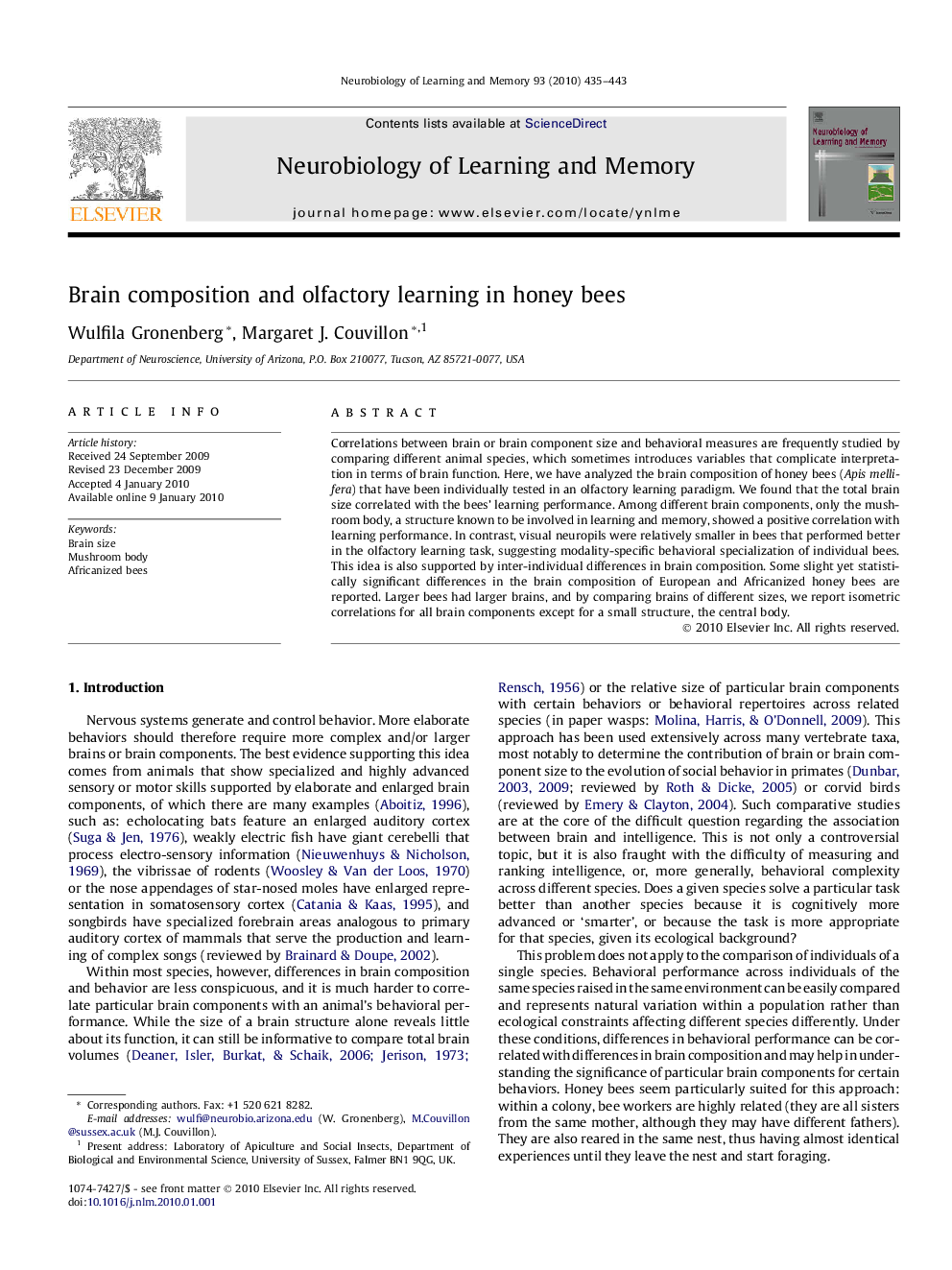| Article ID | Journal | Published Year | Pages | File Type |
|---|---|---|---|---|
| 936932 | Neurobiology of Learning and Memory | 2010 | 9 Pages |
Correlations between brain or brain component size and behavioral measures are frequently studied by comparing different animal species, which sometimes introduces variables that complicate interpretation in terms of brain function. Here, we have analyzed the brain composition of honey bees (Apis mellifera) that have been individually tested in an olfactory learning paradigm. We found that the total brain size correlated with the bees’ learning performance. Among different brain components, only the mushroom body, a structure known to be involved in learning and memory, showed a positive correlation with learning performance. In contrast, visual neuropils were relatively smaller in bees that performed better in the olfactory learning task, suggesting modality-specific behavioral specialization of individual bees. This idea is also supported by inter-individual differences in brain composition. Some slight yet statistically significant differences in the brain composition of European and Africanized honey bees are reported. Larger bees had larger brains, and by comparing brains of different sizes, we report isometric correlations for all brain components except for a small structure, the central body.
